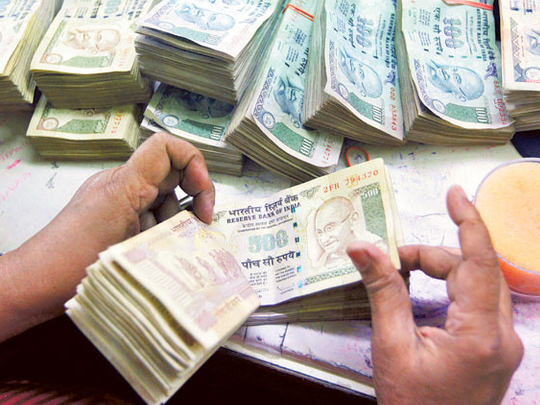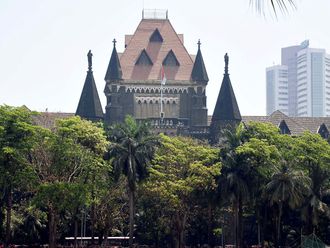
Dubai: UAE-based importers of Indian products are reaping the benefits of the falling value of the rupee.
India’s currency is currently trading at 64 rupees to the US dollar, a drop of 17 per cent this year.
This provides them with an automatic margin of over 17 per cent — with no credit to them — on top of the regular profit margin that comes through selling and re-exporting.
A.S. Lal, a non-resident Indian (NRI) businessman, is one of those counting the extra bucks. He has been importing garments from India for the last 12 years and has never seen such a huge opportunity.
“Yes, there are extra benefits as the rupee is falling,” admits Lal, Chief Executive Officer of Sharjah-based Kreol Traders. “However, sensing this, the retailers to whom we are supplying our products, are already demanding discounts so that they might be able to pass them to the customers.”
Bharatbhai Shah, a veteran NRI businessman whose Al Mustaneer Trading Company imports two to three containers of ceramic tiles from India per month, says, he has to pass on the benefits of the declining rupee to his channel partners. “However, now Indian products are in a comfortable price range when compared to the Chinese ceramic products — that helps us to sell more in this market,” he says. “Price-wise, we are not competitive with Chinese-made products.”
However, this might be short-lived, fears Lal.
“Once the inflation creeps up, our cost of sourcing goods from India will again go up,” he says. “If diesel prices or power tariffs go up due to higher cost of import of energy, then this benefit will wither away.”
Dr Ram Buxani, a leading Indian businessman and Chairman of ITL-Cosmos Group, says, “The influx of foreign ‘hot money’ and our dependence on foreign institutional investors are causing this crisis. These investors withdraw their money from the market — to create shortage of foreign currency in the local market that causes shortage of dollars,” he says.
Ajay Sethi, a non-resident Indian businessman and Chairman of Channel 2 Corporation, says imports to India have become costlier for Indian traders who have to shell out more rupees for the same amount of dollars. However, he said, he fails to understand why rupee is taking the plunge.
“The macro-economic fundamentals do not justify such a steep decline in the value of the currency,” he says. “Yes, our growth has slowed down — but we are still a growing economy — growing at more than 5 per cent. Is someone playing foul? I do not know. But this is strange.”
He said, investments by Indians are going to increase as each dollar or dirham now fetches 17 per cent extra dividend.
“Lots of NRIs are going to invest in India simply due to the changing exchange rates,” he said.
Tim Fox, Chief Economist of Emirates NBD, terms the bearish sentiment towards the Indian rupee as a partial by-product of the upward pressure on US interest rates.
“As a major current account deficit country (with a deficit of around 4.8 per cent of GDP) India has relied on high interest rates to attract funding in the past, but now that US bond yields are on the rise, high Indian interest rates are now that much less appealing,” he said.
“Measures taken to deter Indians from investing overseas (amongst a number of policy responses) have so far failed to staunch the outflow, whereas the markets would likely be more impressed with reforms aimed at attracting more funds into the country from overseas investors.”












